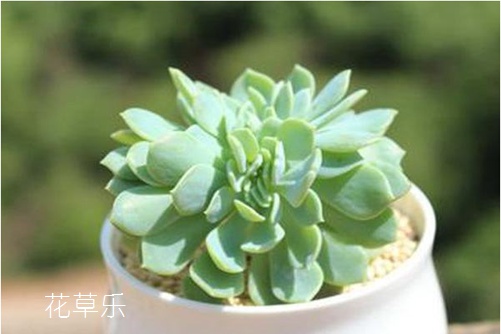The growth environment chooses the shape, habit and conservation focus of succulent plants-silver-rich scales!
Succulent plant bar-the shape, habit and conservation focus of silver-rich scales!
English name: Yinfu scale
Don't say: I haven't seen it before.
Latin scientific name: Crassula nemorosa
Families and genera: crassulaceae
Distribution of origin: eastern Cape, South Africa

Silver-rich field grows in the rock crevices in the mountains, perennial succulent herbs, cryptophytes. It is a rare species of the genus Chlorosaurus. To put it more popularly, it is expensive goods. The genus Cyclobalanopsis is a genus of angiosperms, which belongs to crassulaceae and Cyclophorinae, and is the only genus in the subfamily. About 209 species of the genus are distributed all over the world, and the Eastern Cape Province of South Africa is the densest.
The term cryptosporphyte explains:
There is a noun cryptophyte on it. What is cryptophyte? Cryptophytes, also known as geophytes, are external forms of adaptation to the ecological environment. Plants whose resistant buds are protected by soil or water layers are called cryptophytes; they can sprout quickly from underground storage organs. The buds are buried under the soil surface or in the water body in order to survive the harsh environment. The former refers to geophytes in a narrow sense, while the latter has swamp plants and aquatic plants. Because of its good protective effect on low temperature, it is often seen in high latitudes and high mountains.
How to raise silver rich scales?
A small, unique heart-shaped leaf of the genus Euphorbia of crassulaceae. Silver-rich scales Taobao sell root nodules, silver-rich scales should be shallowly buried in a medium with crisp air permeability, large particles and good water permeability, placed in a cool and ventilated place to avoid sun exposure, and occasionally spray water to moisten the soil surface, which can sprout smoothly.
Silver-rich scale is a rare species of the genus crassulaceae, which belongs to a small variety with tuberous roots and unique heart-shaped leaves. The root tuber is very small, about 1 mm to 2 mm. Peat soil mixed with cinder and perlite, the proportion is about 1:1:1, covered with 2 cm thick 1 to 3 mm red jade soil, red jade soil sifted to remove dust, small roots laid on the red jade soil, covered with thin red jade soil, the water supply is thoroughly watered.
- Prev

Growth habits of flowers and trees habits and plant morphology of thousand-feathered cranes and thousand-feathered cranes
Although there is only an one-word difference between the name of a thousand-feathered crane and a thousand paper cranes, a thousand-feathered crane is a kind of succulent one. Unlike other succulent plants, its leaves grow at 360 degrees without a dead angle. Careful care can make the crane grow healthier.
- Next

Growth habits and main distribution of succulent plants-the morphology, habits and conservation priorities of birds of paradise!
Succulent plants-the shape, habits and conservation priorities of birds of paradise! English name: bird of paradise alias: rolling leaves fall to the ground to take root, Latin name of bird of paradise: Kalanchoe beauverdii plant genus: crassulaceae, cauliflower genus distribution: Mexican succulent plant bird of paradise
Related
- Fuxing push coffee new agricultural production and marketing class: lack of small-scale processing plants
- Jujube rice field leisure farm deep ploughing Yilan for five years to create a space for organic food and play
- Nongyu Farm-A trial of organic papaya for brave women with advanced technology
- Four points for attention in the prevention and control of diseases and insect pests of edible fungi
- How to add nutrient solution to Edible Fungi
- Is there any good way to control edible fungus mites?
- Open Inoculation Technology of Edible Fungi
- Is there any clever way to use fertilizer for edible fungus in winter?
- What agents are used to kill the pathogens of edible fungi in the mushroom shed?
- Rapid drying of Edible Fungi

